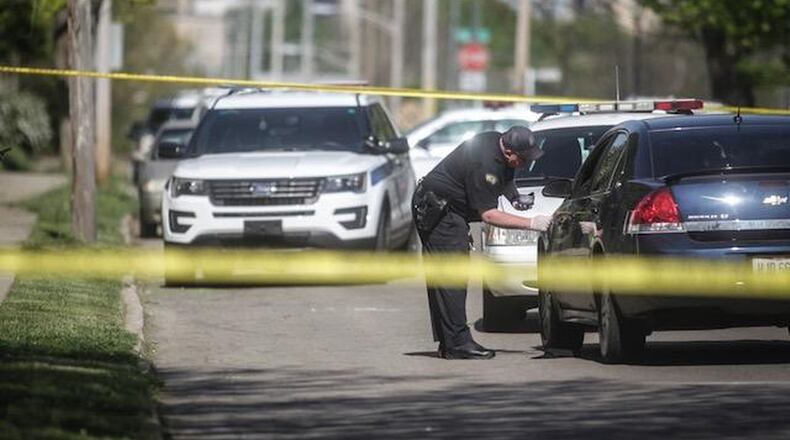Very few of the shootings were reported to 911 by citizens, even though on average about five shots were fired in each incident, police officials say.
The system has helped identify forensic evidence, crime scenes, suspects and even a shooting victim, said Dayton police Major Christopher Malson, who is in charge of the West Patrol Operations division.
But Malson said police need citizens to pick up the phone and report gunfire because it greatly improves the chances of identifying shooters, witnesses and useful evidence.
“We need the citizens help in this,” Malson said. “The program and technology is good, but what it only does is tell us that there was a shooting or shots fired in an area.”
He said citizens often can provide crucial information, like if they heard a vehicle drive off or voices or can provide any kind of description.
MORE: Dayton residents are not reporting gunshots. Police say it’s a problem.
ShotSpotter detected more than 150 separate incidents of gunfire on the New Year’s holiday, between 10 p.m. Dec. 31 to 6 a.m. Jan. 1, Malson said. He said the holiday may have skewed the average number of gunshots per incident.
Within a couple of weeks of ShotSpotter going live, it was clear that underrerporting of gunshots was a problem in the North Main Street and Salem Avenue area.
Of more than 40 incidents of gunfire detected by the system in first few weeks, and citizens only reported a couple to 911.
More time has passed, and the system has detected far more gunshots. But the number reported to authorities remains extremely small, officials said.
ShotSpotter uses acoustic sensors that listen for gunfire and then provides real-time notifications to police dispatchers.
ShotSpotter shares information about the number of gunshots and their location.
Dispatchers then relay that information onto police officers, who respond.
Alerts from the system have led to six arrests, plus multiple search warrants, and police even discovered a shooting victim who had not called authorities, Malson said.
“It has been pretty successful in the short time frame it has been up and running,” he said.
MORE: Dayton may use tech that listens for gunshots, pinpoints location
Police are learning about far more shootings and gunfire incidents, many of which seem to be people testing their weapons or practicing their aim, officials say. But some alerts have been for shootings at homes, vehicles and occasionally people.
Most of the shootings being detected are likely illegal, officials say.
Dayton invested in ShotSpotter with a goal of leading to more arrests and reducing gun crime, and it’s off to a promising start, Malson said.
But, he said, it’s critical citizens call police when they hear what they believe is gunfire.
Sadly, some citizens may do not report gunfire because they’ve grown accustomed to hearing it, Malson said, or they don’t know the exact location so they think they can’t help out.
But Malson said calling can make a difference because police can look at the different addresses of callers, match that with ShotSpotter’s information and identify buildings or individuals that might be involved.
Malson also said it can really help out if callers heard anything, even a vehicle fleeing the scene.
About the Author

